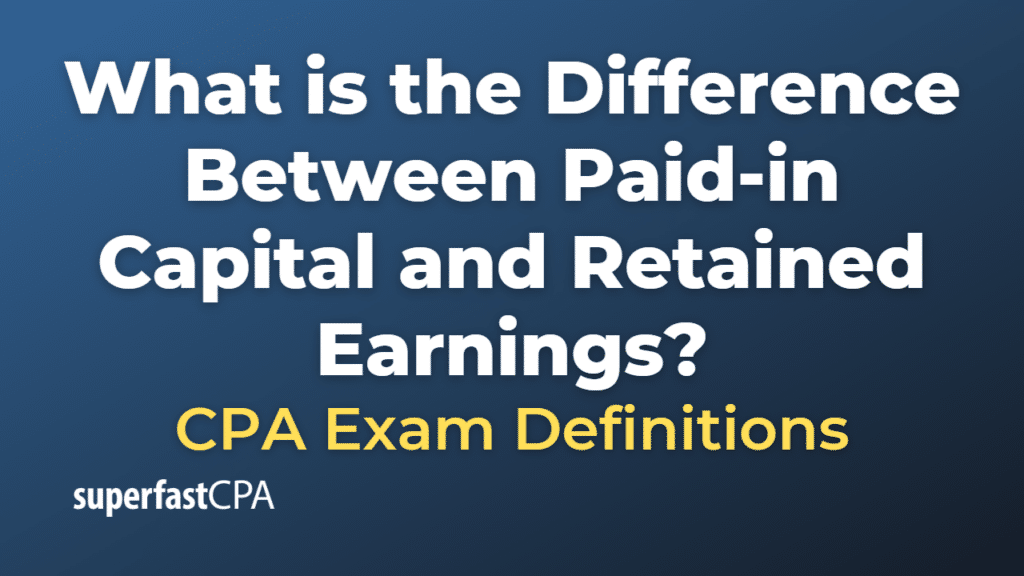Difference Between Paid-in Capital and Retained Earnings
Paid-in capital and retained earnings are both components of a company’s equity, but they represent different sources of equity.
- Paid-in Capital: Also known as contributed capital, this refers to the amount of money that shareholders have invested in the company by buying shares during an initial public offering (IPO) or subsequent share issuance. It can also include additional amounts that shareholders have paid above the nominal value of the shares (par value), which is usually accounted for as “additional paid-in capital”. Essentially, paid-in capital represents the direct capital investment made by the shareholders in exchange for shares of the company’s stock.
- Retained Earnings: This refers to the portion of net income that is retained by the company instead of being distributed to its shareholders as dividends. It represents the accumulated profits of the company that have been reinvested in the business or held for future investment or debt repayment. It’s important to note that retained earnings could be a negative amount if the company has accumulated more losses than profits.
In summary, the difference between paid-in capital and retained earnings is their source: paid-in capital comes from shareholders’ direct investment in the company’s stock, while retained earnings come from the company’s accumulated net income not paid out as dividends.
Example of the Difference Between Paid-in Capital and Retained Earnings
Let’s consider an example with a hypothetical company, “Sunshine Technologies.”
Sunshine Technologies decides to raise funds for its business by selling 1,000,000 shares of stock at a price of $20 each. The stock has a par value of $1 per share. In this case:
- The company raises $20,000,000 from selling its shares.
- Out of this, $1,000,000 ($1 par value * 1,000,000 shares) is recorded as “common stock” or “share capital,” and the remaining $19,000,000 ($20 price – $1 par value, multiplied by 1,000,000 shares) is recorded as “additional paid-in capital.”
- Therefore, the total “paid-in capital” is $20,000,000, which consists of $1,000,000 of common stock and $19,000,000 of additional paid-in capital.
Now, let’s say Sunshine Technologies operates for one year and earns a net income of $2,000,000. It then decides to pay out $500,000 in dividends to its shareholders.
- The net income of $2,000,000 is added to “retained earnings,” increasing it from $0 to $2,000,000.
- The payment of dividends decreases retained earnings by $500,000, from $2,000,000 to $1,500,000.
- So, at the end of the first year, Sunshine Technologies has $1,500,000 in retained earnings, representing the portion of net income it earned and retained (did not distribute as dividends).
This example illustrates that paid-in capital comes from shareholders’ investments, while retained earnings comes from net income not distributed as dividends. The two figures together make up a substantial part of the company’s total equity.












